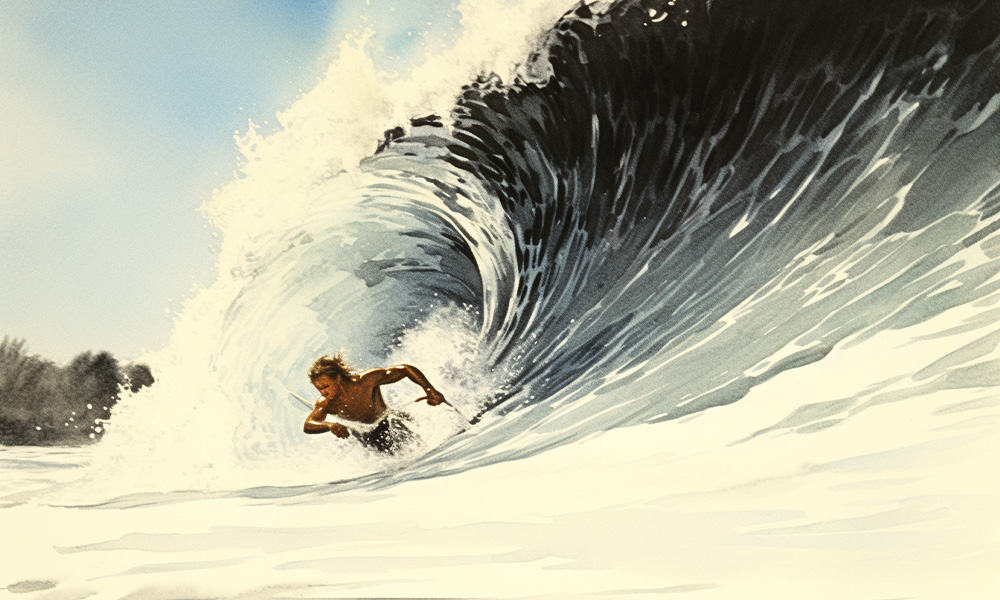I am the guy out in the ocean, jumping, diving and riding waves without a surfboard. I am the guy who, just as a surfer has the wave measured and is ready to begin his ride, appears ten feet ahead, in the path of the ride, though it wasn’t my intention. I am the guy that wants to make it clear that the waves are for everybody’s enjoyment, and not just those using rideable flotation devices. I have nothing against the board surfing community.
I admire the ability of someone to mount a small contoured piece of polyester resin and use the energy of a roaring wave to fling themselves on an exciting ride that can last anywhere from a few seconds to a minute.
It is a skill set that I lack, as balancing on a narrow object has never been my strong suit, much less while being propelled by the ocean’s crushing force. As a body surfer, I understand the passion of the board surfers, the addiction of being in the waves for an hour or more, doing the same thing over and over, until you get that perfect ride.
And I acknowledge my limitations– there are beaches such as Playa Dominical here, or to go more extreme, Nazare in Portugal– that are only for board surfers. Only a fool would go out into those challenging waves without a board. (I was once one of those fools and came as close to drowning as I ever want to experience, years ago in Dominical).
As a lifelong body surfer, I love the feeling of being inside the wave, in the vortex, at the mercy of the wave if you don’t catch it just right. Just you and the ocean, at one with the wave and not atop it like some polystyrene riding cowboy. (Expanded polystyrene, which is as unnatural as it sounds, is the material used in many modern surfboards. It takes over 500 years to decompose).
And this is my issue with board surfers. As much as they clearly love and appreciate the ocean, why are they comfortable with using such an unnatural device for practicing their sport?
The original king of surfing, Duke Kahanamoku, used a redwood board. Wooden boards are still made, and are still available, but worldwide, the vast majority of the million or so surfboards manufactured annually are made from plastics. And according to a group called Surfers Against Sewage (who I assume all use wooden surfboards), the manufacturing process generates massive waste and involves many poisonous byproducts.
Besides the boards, there is the wax most surfers use to help with traction on the board. Many popular waxes contain petrochemical additives such as paraffins that pollute the ocean.
In fact, petrochemicals are in 95 percent of surf wax found on the market today. This petroleum-based wax will eventually fall off a surfboard, affecting beaches, delicate ecosystems and reefs. Paraffin wax is obtained when crude oil is separated into its individual components.
This substance is then bleached with 100 percent strength bleach, creating dioxins (which are toxic). The white ooze created from this is then processed into solid paraffin using various solidifying chemicals, such as acrolyn, which is a known carcinogen. In just a single bar of surfboard wax, there can be up to thousands of undisclosed chemicals.
Sunscreen, board wax, and boards that take over 500 years to decompose, why compared to us board less ocean lovers, every surfer is a one-person toxic waste dump! But I don’t want to be too hard on my board surfing friends.
I have hung out with and partied with enough surfers to know that they are a generally friendly, fun loving community that are accepting of everybody. I know that their love for the ocean is genuine, and in the greater scheme of things, the contribution to the world’s pollution levels is miniscule.
So, hang loose, and just be aware of us board less body surfers out there, getting the same rush with the same waves, just from a different angle.






